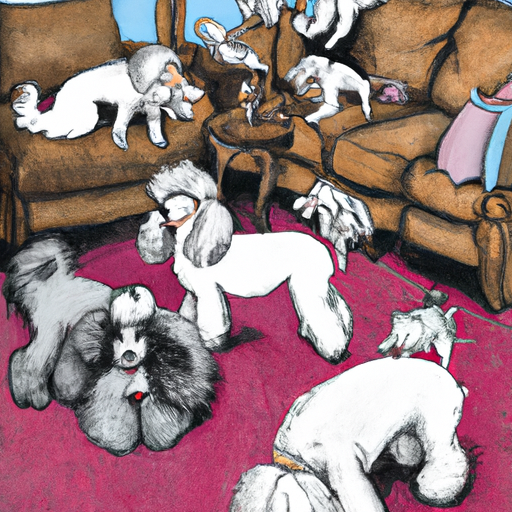As a caregiver, you’ll undoubtedly be familiar with the warmth and companionship a pet can offer. However, you might also be all too familiar with the piles of fur that seem to be a constant presence when you have a shedding dog in your care. But don’t lose heart! There are breeds of dogs that don’t shed, making them perfect for those who prefer a fur-free environment. Let’s dive into the world of hypoallergenic dogs and find out which breeds you can consider.
1. What are Hypoallergenic Dogs?
Hypoallergenic dogs are breeds that do not shed much hair or dander, making them perfect for those with allergies or for caregivers who prefer a cleaner home. However, no dog can be 100% hypoallergenic, but these breeds come very close. Here’s a quick look at some of these breeds:
- Poodle (and Poodle mixes)
- Bichon Frise
- Shih Tzu
- Maltese
- Portuguese Water Dog
Each of these breeds has its unique attributes, so it’s essential to choose one that suits your lifestyle and the person under your care.
2. Factors to Consider When Choosing a Dog
When choosing a dog, consider the following factors:
- Size: Small dogs like the Shih Tzu and Maltese are more comfortable to handle and require less space.
- Temperament: Poodles and Bichon Frises are known for their friendly and outgoing nature, perfect for a lively environment.
- Care Needs: Some dogs, like the Portuguese Water Dog, require regular exercise.
| Dog Breed | Size | Temperament | Care Needs |
|---|---|---|---|
| Poodle | Varies | Friendly, intelligent | Regular exercise, mental stimulation |
| Bichon Frise | Small | Cheerful, playful | Regular grooming, companionship |
| Shih Tzu | Small | Loyal, affectionate | Regular grooming, moderate exercise |
| Maltese | Small | Gentle, playful | Regular grooming, moderate exercise |
| Portuguese Water Dog | Medium | Adventurous, intelligent | Regular exercise, mental stimulation |
3. Grooming Needs of Non-Shedding Dogs
While non-shedding dogs might save you from vacuuming fur off your couch, they do require regular grooming to keep their coat healthy. This includes brushing, bathing, and in some cases, professional grooming services.
- Brushing: Most non-shedding dogs require daily brushing to prevent matting.
- Bathing: Depending on the breed, you might need to bathe your dog every few weeks.
- Professional grooming: Dogs with long hair, like the Shih Tzu and Maltese, might need professional grooming.
4. Health Considerations for Hypoallergenic Dogs
Just like any other pet, hypoallergenic dogs come with their unique health considerations. Regular check-ups and a balanced diet are crucial for their well-being. Some breeds are prone to specific health conditions, so it’s vital to research before bringing a new pet into your care.
5. Finding Hypoallergenic Dogs for Adoption
If you’re looking to adopt a hypoallergenic dog, many rescue organizations and shelters have them available. Some even specialize in specific breeds. Remember, adopting a pet is a lifelong commitment, so make sure you’re ready to provide a loving home for your new furry friend.
Frequently Asked Questions
Q1: Are all non-shedding dogs hypoallergenic?
– Not necessarily. While non-shedding dogs are less likely to trigger allergies, some people might still be allergic to their saliva or urine.
Q2: Are hypoallergenic dogs expensive?
– The cost varies depending on the breed, age, and where you’re getting the dog from.
Q3: Can I stop my dog from shedding?
– Shedding is a natural process for dogs. However, regular grooming and a good diet can help minimize shedding.
Q4: Are hypoallergenic dogs good for children?
– It depends on the breed. Some hypoallergenic breeds are great with kids, while others might be better suited for adults.
Q5: Can hypoallergenic dogs still cause allergies?
– Yes, but it’s less likely. No dog is 100% hypoallergenic, and individual reactions can vary.



